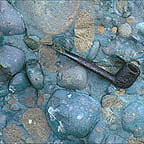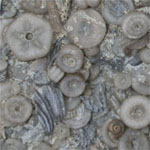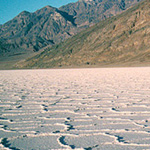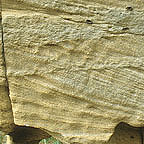Sedimentary rocks are commonly grouped according to whether they are clastic, biochemical, or chemical. This works fine, except that it is not clear whether some limestones are biochemical or chemical, and it is not clear where to put dolostone, which is a common rock that often seems to have formed as a result of post-burial chemical alteration of limestone. Here is the grouping followed on this web site:
- Clastic (or detrital) rocks are made of clay, silt, sand, gravel, and/or boulders. These grains are usually made of silicate minerals (quartz, feldspar, mica, clay minerals, etc.) or rock fragments because most biochemical and chemical grains (see below) do not survive chemical weathering or extensive transport.
- Coal is made of compressed plant debris and thus is a biochemical rock. However, since coal is often found interlayered with clastic rocks, we'll discuss coal with the clastic rocks.
- Carbonate rocks include limestone, which is made of calcite (CaCO3), and dolostone , which is made of dolomite (CaMg(CO3)2). Dolomite often forms when limestone recrystallizes after burial. Many limestones are biochemical; some may be chemical (inorganically precipitated).
- Evaporite rocks form when sea water or lake water dries up and precipitates gypsum (CaSO4·2H2O), halite (NaCl), or other minerals. Evaporites are chemical sedimentary rocks.
|




